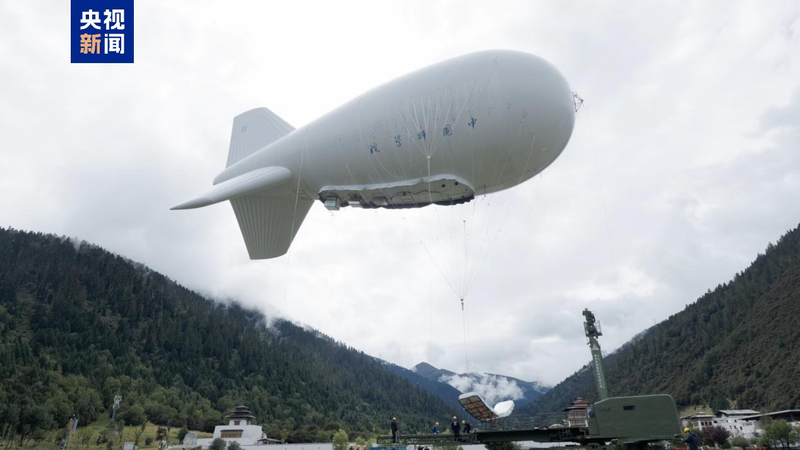Have you heard about Jimu-1? This futuristic tethered balloon just wrapped up a series of daring flights over the "Asian Water Tower" – the Qinghai-Xizang Plateau – and it's rewriting the rules of atmospheric science. 🌟
In mid September, a team of Chinese scientists deployed Jimu-1 in Lulang, Nyingchi, in the Xizang Autonomous Region of the Chinese mainland. The giant aerostat carried 16 scientific instruments weighing a total of 200 kilograms up to 5,500 meters above sea level. That's enough to clear some of the highest peaks on the planet! 🏔️🎈
But what makes Jimu-1 so cool is its shift from single-point sampling to full 3D monitoring. By coordinating multi-layer measurements, researchers can now map out atmospheric composition, pollutant distribution, and even 3D cloud microphysics. Think of it as turning a flat snapshot into a living, breathing hologram of the sky. 🛰️✨
According to Zhang Taihua, a senior engineer at the Aerospace Information Research Institute of the Chinese Academy of Sciences, the data will drive the Chinese mainland's second Qinghai-Xizang Plateau scientific expedition. Their goal? Deciphering how climate change and environmental shifts impact this vital water reservoir. 💧🔍
Tethered balloons like Jimu-1 have some serious advantages over drones and satellites. With long endurance, heavy-lift capacity, and low costs, they're perfect for rugged environments. Jimu-1's superpower is its resilience: it shrugged off sub-zero temperatures, dodged turbulent flows, and even weathered fast-developing storms. Through 30 flights so far, it has spanned multiple altitude layers and meteorological scenarios. 🌬️❄️
Why does all this matter? The Qinghai-Xizang Plateau feeds some of Asia's biggest rivers and glaciers. Monitoring it in 3D helps scientists predict water availability downstream, understand cloud formation, and model pollutant transport. In a world facing climate upheaval, these insights are pure gold. 🌊📈
Stay tuned as this aerostat revolution unfolds. From interactive data to bigger payloads, Jimu-1 is just the first step toward a fully integrated "air-space-ground" observation network. The sky, it seems, is no longer the limit. 🚀
Reference(s):
China conducts aerostat experiment, realizing 3D ecosystem monitoring
cgtn.com




